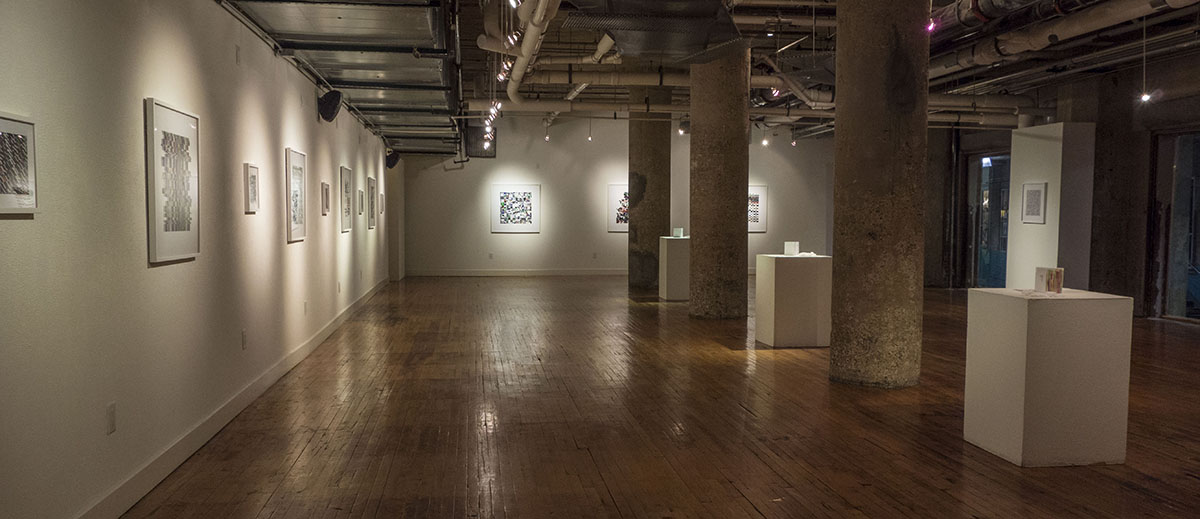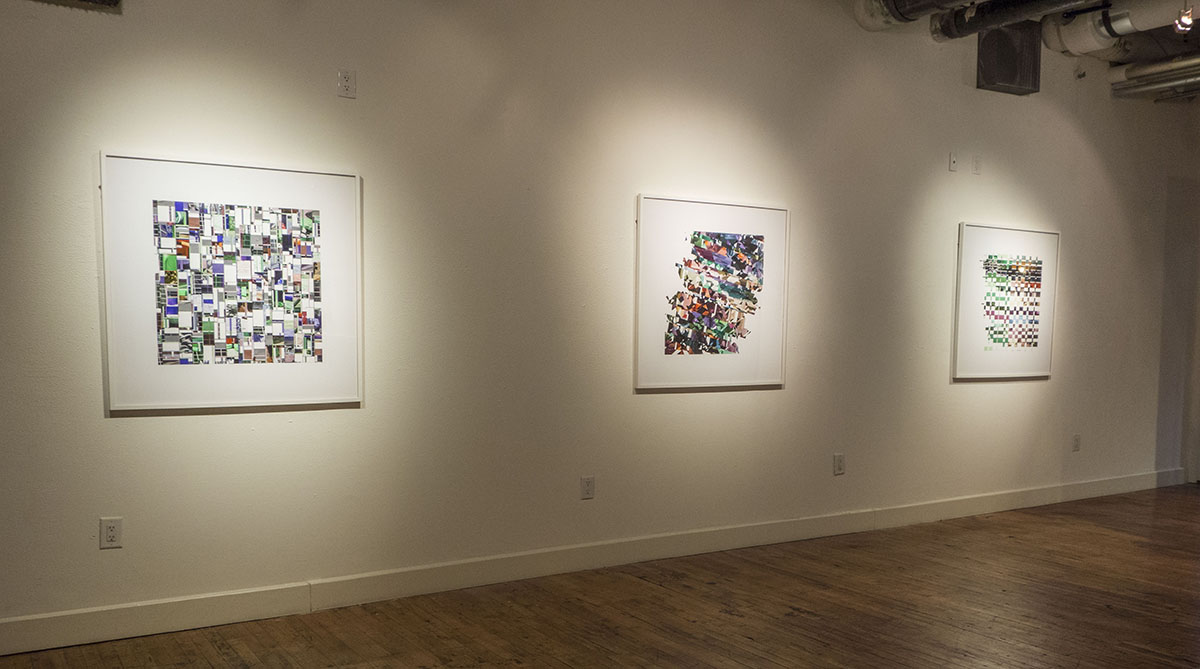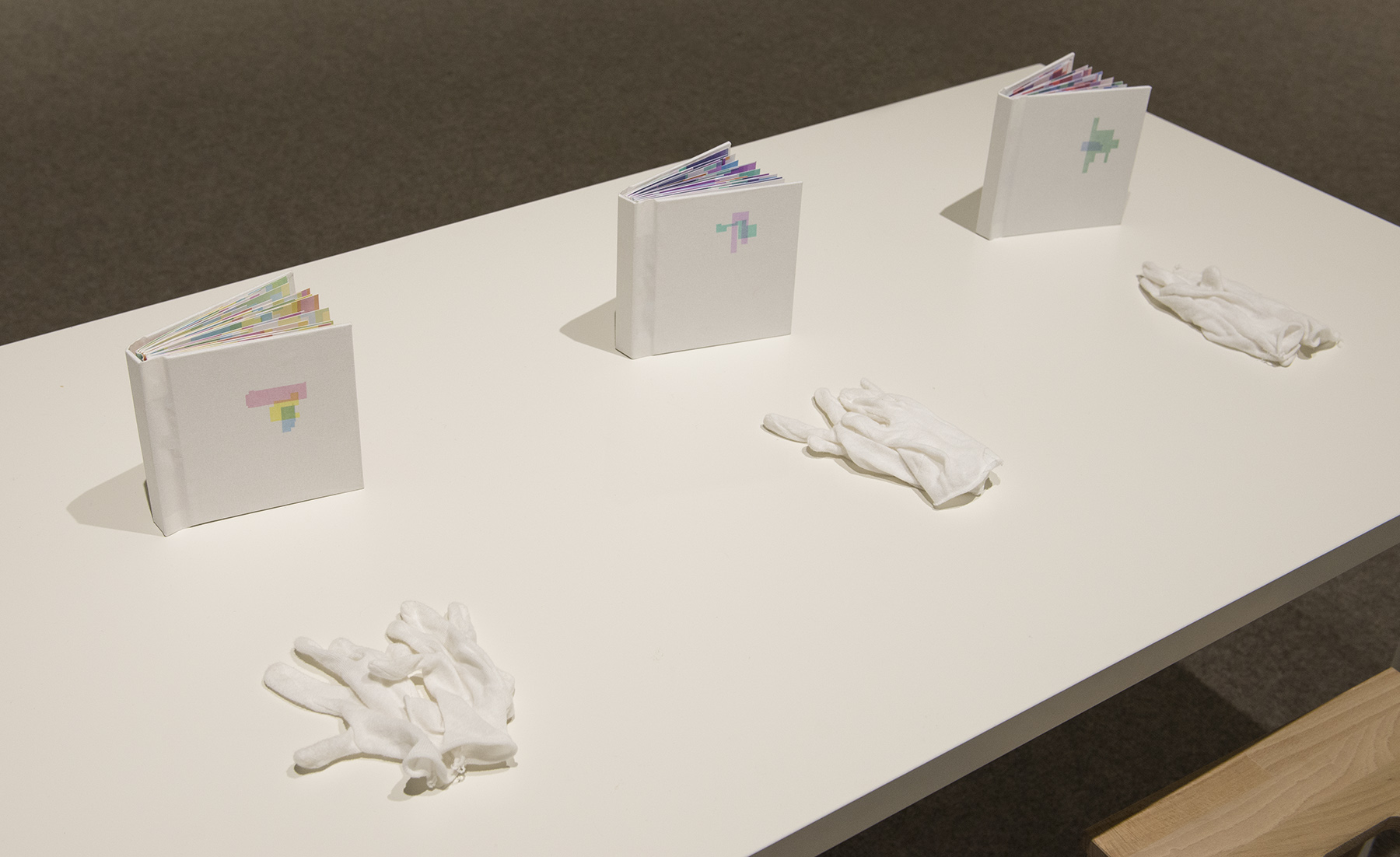Looking Back at Saturn is an exhibition that consists of still images, video projection and artists’ books. The varying media investigate personal and collective memory by visually depicting individual memories of the artist, volunteer collaborators, and the viewer.
Visual representation of 42 volunteer participants’ memories, are seen in inkjet prints of collaged imagery. These individuals, responding to a call for imagery, via email and online forums, provided photographs that depicted a memory from their past. These compiled images, were collaged with one to two other images using “binary collage,” a digital collage method where the digital code of a photographic file is combined with that of another. The resulting images appear as energetic abstract, geometric shapes that consist of segments of photographic imagery that have drastic shifts in color. These abstractions of photographic information represent the accumulation of collective memory and the natural tendency for memory to be remembered in quick flashes within the mind’s eye. The participation of multiple people reinforces the significance of memory in humans’ lives and references the role of social memory in developing group connectivity.
The video piece titled, Scattered, is composed of time-lapse imagery that represents my memory. Each image within the sequence is visually altered by image-editing software as well as manipulating and combining digital, photographic code. This editing method allows for sections of more than one image to be viewed at once, creating a moving collage of segmented photographs. By gradually altering these photographs, the imagery of memories slowly become deconstructed and abstracted, allowing the viewer to visually experience the sporadic and spontaneous recall of thoughts and memories.
Three artists books, Looking Back at Saturn I, II, and III, encourages an exploration of the past by promoting the viewer to investigate his or her own memory. Prompted by text, the viewer is invited to project visualizations of their past into the colorful, geometric shapes within the books, which are reminiscent of the compositional elements within the still and moving imagery of the exhibition. The resulting memories in the mind’s eye of each viewer allow an active participant within the exhibition.






































